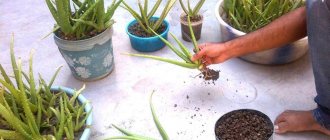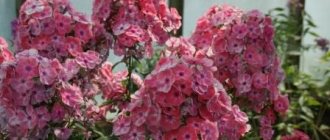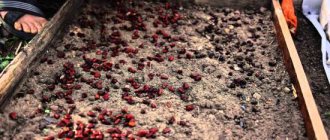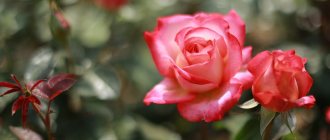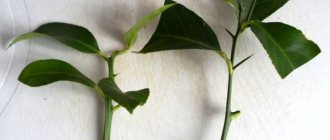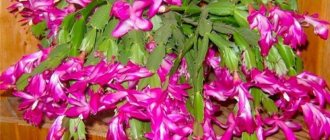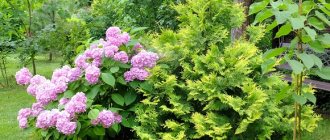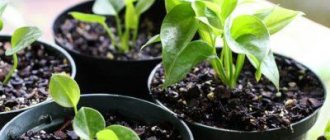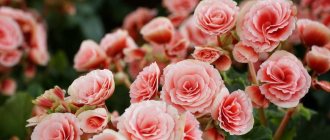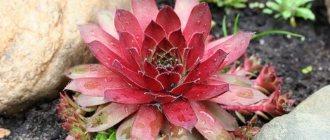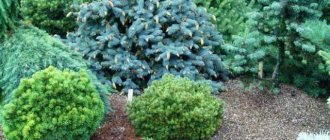Description of the plant and photo
Let's start with a description of the appearance of anthurium:
- The foliage is dark green in color. The shape is arrow-shaped, there is a core. The length of the leaves is forty centimeters.
- The flower's spadix is pink, yellow or white, covered with a veil. The color of the bedspread is often dark red, although white and spotted shades are also found. In appearance, the shape is similar to a heart.
- Male happiness blooms from early spring to late autumn, about 7 months. Some varieties only bloom for a few months.
- The height of the stem is from one and a half to 0.8 meters, the diameter is 0.5 meters with proper care.
Since the plant is very capricious, it grows at home, indoors, and caring for it requires certain agrotechnical skills.
Types and varieties
In the wild, Anthurium grows in America, in subtropical and tropical climate zones. In nature there are more than 800 species. More than a hundred types of male happiness grow indoors, 77 of them were obtained through crossing.
Let's look at the most popular types.
Andre
The stem reaches a height of up to ninety centimeters. The root system is strong and robust. The foliage shape is oblong, the structure is leathery, width 20 cm, length 40 cm. The length of the bedspread is about 20 cm.
This type includes the following varieties:
- Cuba, Polaris, Akropolis – white color;
- Arizona, Minnesota, Florida and Pink Champion - the color of the bedspread is red;
- Marasol, Casino – yellow color.
Scherzer
The shoots are underground and slightly shortened. The foliage is dense, dark green, with small black dots on the edges. The length of the petiole ranges from four to twenty centimeters, and the length of the stem reaches 60 cm.
The bud itself is elliptical or ovoid in shape, the color varies from orange to red. The cob is twisted into a spiral, yellow in color.
Varieties:
- Rustica,
- Unika,
- Artus,
- Arinos,
- Emerald.
Majestic or crystal
The appearance is distinguished by elegance. The shoots are shortened. The foliage is green in color with a velvety structure, length from twenty to forty centimeters.
The leaves have veins with a silvery crystal sheen, which is where the species got its name.
Baker
The height of the shoot is 10 cm, the color of the leaves is green, brown spots are visible below. The spadix is cream-colored, the spathe is pale yellow, the shape is oval.
Caring for each species is the same; the duration of flowering and the external characteristics of the plant depend on correctly performed procedures.
How does anthurium reproduce?
Gardenia jasmine - care at home after purchase
Owners of flowering anthurium often face the risk of disease or death of the plant in the absence of proper care or infection. It is better to worry about the propagation of the culture in time. Additional specimens are obtained by dividing the bush, germinating seeds, cuttings, and forming air layering.
Breeding anthurium at home
Rooting cuttings
The ideal time for rooting anthurium cuttings is from April to June. For propagation, shoots 12 cm long with aerial roots and two healthy leaves are suitable. Before planting, the leaves are removed or rolled into a tube and tied with thread, preventing excessive evaporation of moisture.
Cuts on the cuttings are treated with activated carbon. The shoots are immersed 5 cm in the substrate, watered and covered with film to form a greenhouse effect. The temperature in the greenhouse is maintained close to +21-24 degrees, sprayed and ventilated daily, and the substrate is moistened.
On a note. If the new seedlings began to produce green leaves, the rooting of the cuttings was as successful as possible. The young plant is ready to be transplanted to a permanent location.
Anthurium propagation at home by cuttings
Seed propagation
This method is for those who are not afraid of difficulties. Here problems may arise due to the quality of planting material. Only fresh seeds show viability. It is advisable to sow them immediately after harvest. Therefore, it makes no sense to buy varietal anthurium seeds. But if the shelf life does not exceed 3 months, you can try.
You can experiment at home by pollinating the opened anthurium flowers with a soft brush. To do this, transfer pollen from one flower to another. After 4 - 5 days, it is advisable to repeat the procedure, since the maturation of pistils and stamens occurs unevenly.
After pollination, the anthurium fruits ripen, looking like berries tightly clinging to the inflorescence. The seed ripening period lasts 8 - 10 months. When the inflorescence has changed color, and individual fruits are no longer held on it, it’s time to collect the seeds. The seeds extracted from the fruit are dried for 2-3 days and sown.
Anthurium fruits look like berries
- Sow the seeds in a shallow bowl filled with loose soil mixture. You can use peat.
- Plant the seeds shallowly - 3 mm.
- After planting, use a fine spray to moisten the surface.
- Germination occurs in a bright place, but not in direct sunlight. The temperature should be between 20 - 240C.
- It is best to place the container in a mini-greenhouse or bag, creating a warm and humid atmosphere inside.
- Ventilate the shelter periodically.
- The first shoots may appear in 7 days, but the whole process can take 2 weeks.
- The first leaf on the seedlings will appear in a month.
- With the appearance of the 3rd leaf, the moment comes for picking into separate cups.
Sown anthurium seeds germinate within 2 weeks
A plant grown from seeds will not bloom as quickly as we would like. At least 4 years must pass before the handsome anthurium gives you a bouquet of beautiful flowers.
Air layering
If the plant stretches out and loses its shape, the upper shoot can be conveniently used for propagating anthurium. You will need to free part of the top from dried scales and leaves and wrap it with wet peat moss.
Secure a bag or film over the bandage. After a certain time, new roots will begin to penetrate the moss. The cuttings from the anthurium are cut and rooted in a separate container. The remaining stem will quickly grow side shoots.
Root division
Propagation by dividing roots is convenient to carry out when transplanting anthuriums into new flowerpots in the spring. Step-by-step instructions for the process include a number of steps:
- An adult bush is carefully removed from the pot, the soil is shaken off, and the root system is freed.
- The roots are unraveled and divided equally with a sharp, clean knife.
- Sections and broken roots are disinfected with activated carbon.
Important! The separated parts of the flower are planted separately.
Difficulties in growing anthurium
Problems that the owner of anthurium faces: male happiness leaves turn yellow, anthurium leaves dry, anthurium flower turns yellow, spots on anthurium, anthurium diseases, spots on anthurium leaves, anthurium turns black, male happiness turns yellow. All these are reasons for improper flower care. Anthurium care should be reconsidered.
Let's take a closer look at individual situations.
- spots on anthurium. Spots on anthurium leaves occur due to excessive watering or improperly selected soil. It should be remembered that the soil for anthurium should be light and the roots should constantly breathe. Make sure the potting soil is loose, low in peat and high in leaves and bark. Remember that in the wild, anthurium does not grow in the ground, but on tree roots and in foliage. Limit watering the flower.
- the leaves of the anthurium turn yellow, the flower of male happiness is blacker - a sign of a very strong overflow. Dry the soil or completely replace it with a new one, cut off the affected foliage.
—the leaves of the anthurium have darkened. Most likely, you left the flower in a draft or it was exposed to hypothermia. You should move the anthurium flower to a warmer room without drafts.
- Anthurium dries. The reasons may be too dry air (spray the flower more often), or lack of lighting (move the flower to a more illuminated place or provide the flower with an additional lighting lamp).
- Anthurium leaves are pale, cuttings are long - a sign of lack of lighting.
In rare cases, an anthurium flower is susceptible to infection by parasites such as mites, thrips, and mealyworms. Solving this problem is quite simple; I bought an antiparasitic agent at a flower shop. Treat the flower 2-3 times at intervals of several times according to the instructions for the preparation.
Caring for anthrurium at home4.8 (95%) Ratings: 4
Landing rules
Let's consider a scheme of actions that will allow you to grow an attractive, strong plant:
- For planting, special attention must be paid to the selection of soil. The soil should consist of two types: leaf soil and peat. To make the soil loose, add coarse sand in small quantities.
- Additionally, broken brick and charcoal are added, this allows the soil to be well saturated with moisture. Add 100 grams of drainage per kilogram of soil.
- He loves space, so you need to choose appropriate flowerpots. If there is not enough space for the roots, the soil will oxidize and inflorescences will not form.
- Plant in the center of the pot, the root system should be located four centimeters below the top of the pot. The root is gradually covered with soil to a depth of two centimeters, the remaining two centimeters are covered with sphagnum.
- Everything is well sealed to avoid air cushions. To do this, you can shake the pot a little and knock on it.
- Anthurium is watered and sprayed with a growth stimulator.
Landing completed. Next, choose a suitable place for placement, avoid direct sunlight and drafts.
Let's watch an interesting video about caring for the male happiness flower:
Preparing the plant for planting at home
Despite its tropical origin, the flamingo takes root and grows well in apartments.
How to choose a pot for anthurium?
When choosing a pot for this handsome man, consider the following points:
- There should be large drainage holes along the entire bottom, since the roots of the epiphyte must breathe, and they react poorly to stagnant moisture.
- You should not plant anthurium in clay pots, as they only have one hole. Clay is also saturated with moisture and attracts cold.
- The flowerpot should be the same in width and height, and its diameter should be 2–3 cm larger than the previous one. In a large pot, the “flamingo” will not soon please you with flowers, because first it will grow roots.
Read how to properly replant anthurium.
Soil for anthuriums
To achieve long-lasting flowering, it is important to give the plant the soil that suits it.
Its roots are similar to orchid roots, and their soil requirements are similar:
- good permeability of water and air;
- weak acid reaction;
- no lumps.
Flamingo retail outlets offer balanced substrates suitable specifically for these colors. If this does not happen, then soil for orchids will do just fine - they have similar compositions.
You can make the soil yourself - mix 1:1 purchased universal soil and pieces of pine bark. The universal substrate has weak acidity, since it contains enough peat. And the bark will provide the necessary air space inside the flowerpot.
Also added to this mixture is your choice:
- perlite for moisture absorption;
- crushed charcoal;
- river sand;
- expanded clay;
- broken red brick;
- sphagnum moss.
You can take one or several components at once.
Read more about how to choose and prepare your own soil for anthurium.
If the bark is not purchased, but collected in the forest, it should be from healthy trees, not covered with green moss, and free from pests. It must also be pre-disinfected with boiling water or a solution of potassium permanganate.
Location
Anthurium requires enough daylight. However, exposure to direct sunlight is not suitable for it. It is better to allocate a place for the flower on a window facing east or west. Also, this tropical resident should not be placed in drafts or near radiators.
Is a transplant necessary after purchase?
After purchasing the flower, you should definitely transplant it into a good, spacious flowerpot. This procedure must be completed within three days. If the plant blooms, it is allowed to replant after two to three weeks.
The plant is replanted using the transshipment method. At the same time, you cannot replace the soil or wash the roots, as this will injure the flower and contribute to its death. You can remove old mail if the root system of male happiness is damaged or if the wrong soil mixture was used.
To perform the transplant, a basin, film and newspaper are used.
With gentle movements, the stem is loosened and the plant is taken out of the flowerpot. If you cannot pull out the roots, water the soil and wait until it softens. You can use a fork to make four holes to let air in.
Preparatory stage
First you need to select a new pot and prepare the soil if you are not using a purchased one.
Selection of pot
The size of the anthurium pot should correspond to the volume of the root system. A small young shoot will easily fit and feel comfortable in a container approximately 10 cm in diameter. When replanting annually or regularly, you need to select a pot with a diameter of 3–5 cm larger to provide the roots with the necessary space.
Anthurium does not have a branched and deep root system; all roots are located in the top layer of soil. Therefore, you need a wide pot, with low sides, and shallow. It is better if it is made of ceramic, but plastic will do. There should be at least 4 holes about 0.5 cm at the bottom for drainage. This will prevent stagnation of water during watering or irrigation. Be sure to place a tray under the pot.
Soil preparation
Both a ready-made substrate, which can be found in the store, and a self-made soil mixture are suitable. In the first case, choose an earthen mixture intended for decorative flowering indoor plants. You can transplant a flower into it immediately after purchase or during regular transplants. Typically, such mixtures are already enriched with the necessary set of nutritional components and are optimal in composition.
You can make soil with your own hands from the following components:
- 1 part each of sphagnum, peat;
- 1 part coniferous soil;
- 1 part leaf soil;
- 1 part coarse river sand.
Then the ingredients are thoroughly mixed, and if necessary, remove debris and weed roots. The pot, if it is not new, also requires disinfection. It can be frozen for one day in the freezer of the refrigerator, washed with potassium permanganate, or, if the manufacturing material allows, calcined in the oven.
A drainage layer about 3 cm thick or less is laid on the bottom, depending on the height of the container. This can be large perlite, small broken cuttings of a pot or brick, or pebbles. Sprinkle the top with a thick layer of earth.
How to prepare a plant for transplanting
One day before the planned transplant, the flower in the pot needs to be moistened and the green parts should be sprayed. This is necessary to make it easier for the plant to come out of the pot. You can use the “bottom watering” method, that is, pour water into the pan, which the anthurium will absorb with its roots.
If aerial roots have taken root on the surface of the earth, they need to be carefully dug up, being careful not to damage the delicate roots.
Watering, recommended temperature
Watering is carried out regularly, avoid flooding, otherwise mold will form on the ground. Settled or filtered water is used for irrigation. If the pot is in a room where the air is dry, spraying is carried out. You only need to spray the foliage; water should not get on the cover and stem.
The plant does not like the sun, as the leaves can get burned. Therefore, anthurium is placed in partial shade or diffused lighting is created.
The optimal temperature is plus twenty, plus twenty-five degrees. In the winter season, the temperature should not be less than sixteen degrees.
Do not place flowerpots near heating devices or in drafts. This is worse than low temperature.
Let's watch a video on how to care for a flower to cause vigorous flowering:
Feeding
If you do not feed the plant, but only water it, this will not contribute to good growth and active flowering. In addition, timely feeding affects the appearance of foliage and the healthy appearance of the entire plant.
The first fertilizing is applied in early spring, at the beginning of March. Organic and mineral substances are used as fertilizers. It’s better to buy special products in the store; you won’t be able to make the perfect mixture yourself. The packaging indicates how to dilute it and in what quantity to use the product.
Fertilizer is introduced once, alternating fertilizers with each other. You should not increase the dosage; an excess of minerals also has a negative impact on men’s happiness, just like their lack.
Soil for replanting anthurium
The peculiarity of anthuriums is that plants can thrive only in a very loose, light substrate.
The best soil for this tropical inhabitant is one that easily allows water to pass through and provides easy access to oxygen. After transplanting the anthurium into a suitable substrate, its roots easily penetrate into the soil, easily receiving the necessary nutrition and moisture. If the grower makes a mistake with the choice of soil for the anthurium, this will soon affect the plant, its growth, decorativeness and health. There are many recipes for preparing soil mixtures for anthuriums. The substrate can be based on either a ready-made mixture for orchids, to which crushed charcoal and a little turf soil are mixed, or a self-made soil. It is often recommended to mix crushed sphagnum, peat and coconut fiber in equal parts for anthuriums. There is also a ready-made specialized substrate for anthuriums and other types of aroids.
True, such natural raw materials require the most thorough disinfection in order to eliminate the risk of plant contamination by soil pests and fungi.
Flower pruning and rejuvenation
Pruning is done after the flower stops blooming. Since anthurium blooms for up to seven months, the roots lose all strength and vitality. Using a sharp knife, the bud is cut to the very base, and the cut site is treated with activated carbon.
The procedure is performed with gentle movements so as not to injure the stem and other parts of the flower. You can wait until it dries on its own and it will be easier to remove its core.
Anti-aging procedures are carried out to preserve appearance. The leaves are able to grow, and growths form near the roots. This contributes to aging and lack of buds. To rejuvenate, you need to not only remove excess leaves, but also replant the plant. There are aerial roots under the leaves; several shoots, along with the top, are cut off with careful movements, transplanted to a new place and watered abundantly.
Anthurium propagation by cuttings at home
The flower is propagated by stem (apical) and leaf cuttings. Cuttings of “male happiness” are best carried out in May – June.
Anthurium propagation by leaf: step by step
- Cut a leaf with a petiole about three cm long, roll it into a tube, and tie it with thread and an elastic band to reduce moisture evaporation (transpiration).
- Treat the leaf cuttings with Kornevin and plant in moist soil (peat and sand or leaf soil - 1:1). Lightly water it and cover the container with transparent film, bag or jar.
- Maintain a warm temperature of 20-24 °C, ventilate and spray the cuttings daily.
- After a new leaf appears (which means it has taken root), transplant the cutting into a separate container (30-40 days).
- It is better to take a piece of stem with a leaf and an aerial root; it takes root faster and takes root more often.
- In general, when propagating “male happiness” by leaf, a low percentage of successful rooting is observed.
Propagation by apical cuttings is closely related to the topic of flower rejuvenation, so this method is described in detail in the next section.
Reproduction methods
The Male Happiness flower reproduces in two ways:
- shoots or cuttings;
- seeds.
The first method is simpler and more effective, but propagation by seeds requires certain skills, this task is quite painstaking.
Reproduction scheme using cuttings:
- The procedure is performed in the spring during transplantation.
- Several shoots are separated from the mother root with a knife using careful movements.
- The cut cuttings are planted in ready-made flowerpots with drainage and special soil. If the procedure is performed correctly, the shoots quickly take root and begin to grow.
Reproduction scheme by seed material:
- It is important that the plant is pollinated. In this case, fruits will grow on the flower, containing seeds inside.
- The seeds are washed and soaked in potassium permanganate.
- Place the seed in a wet substrate under film or glass. Leave the seeds until the germination process.
- Transplant into flowerpots when the stems become stronger.
In both the first and second cases, the green pet grows up beautiful and strong.
Flower care for men's happiness
As mentioned above, care includes:
- watering;
- feeding;
- pruning;
- transplantation as a rejuvenation.
But when performing all these procedures, it is worth considering some nuances:
- When watering, do not use running or cold water. Take clean warm water or room temperature. Men's happiness needs abundant watering during flowering.
- Liquid stagnation and soil drying out are dangerous. To prevent drying, moss or sphagnum is placed on top; it will not allow moisture to quickly evaporate in the summer.
- The pot is placed on the windowsill where there is no sun. If this is not possible, then you should darken it with a curtain or move it to the part of the window where the sun's rays fall least. In the winter months, provide the flower with artificial lighting, for example, a table lamp.
- You should not move anthurium from place to place. It is recommended to change locations no more than twice a year: in autumn and spring.
The foliage needs to be wiped with a damp cloth. This procedure is performed every day. This is a more reliable option than spraying with a spray bottle, since in the second case moisture can get on the cover and other parts of the flower.
Take these nuances into account; your pet will delight you with its unearthly beauty all year round.
What diseases is the flower susceptible to?
Anthurium is very delicate, so it is often susceptible to various diseases characteristic of this culture.
We provide a list of possible diseases in the table.
| Fungal infection | The disease develops against the background of excess moisture. The wet root system and foliage begin to rot, the fungus spreads at a significant speed and infects the plant. To prevent this, you need to stop watering and create a dry microclimate in the room. |
| Viral disease | The culprit for this is insects. Damage is indicated by the sluggish state of the anthurium and dry foliage. If such symptoms are detected, you should immediately transplant the anthurium into a new flowerpot and create the optimal temperature and humidity for it. |
| Orange aphid infestation | If the insects are not eliminated, the plant may die. As a preventative measure, it is necessary to periodically inspect the condition of the leaves and stems. If diseased areas are found, remove them immediately. You can also use the drugs Actellik and Aktara, or make your own remedy from shag infusion. |
Many diseases can be prevented if you constantly monitor the condition of the plant and provide the necessary assistance in a timely manner.
Pests and diseases
As a result of illiterate care, the anthurium can get sick. Several types of pests parasitize its green, lush foliage.
- Aphid. It is characterized by a colonial distribution system. All individuals live on the underside of the leaf blade, so it is quite difficult to notice them immediately. Signs of its appearance are as follows: the foliage is curled and discolored;
- the plant dries out;
- growth slows down.
To eliminate the problem, insecticide treatment will be required.
- Scale insects. Bugs are brownish-beige in color. Pests feed on sap. Signs of their appearance: the outside of the leaves are covered with dark sticky spots, and brown tubercles are visible on the reverse side. The result is slow growth and death of the plant. To destroy parasites, you will have to resort to special treatment; ordinary insecticides are powerless here.
A systemic product is purchased at specialized retail outlets, after which the plant is treated with mineral oil.
- Spider mites. Due to their miniature size, they cannot be seen with the naked eye. But it is possible to determine the infection, since it is accompanied by the appearance of cobwebs. The foliage curls up. The control method is as follows: the leaves are washed with a warm soapy solution, then the flower is sprayed with acaricides.
- Thrips. Flies are dangerous because they infect anthurium with viruses, and their secretions contribute to the appearance of fungal diseases. The foliage takes on a yellowish-white hue. To combat them, you will need special tools, which are best purchased in the store.
When parasites appear, you must not hesitate, otherwise the plant will die or infect neighboring ones.
Infections affect the appearance of anthurium. Using them, you can determine the type of disease and its causes. Among the diseases, we will highlight the most common ones.
- Fusarium is a fungus, the effect of which is determined by withering and yellowing leaves and bending of stems. To protect the soil, it should be spilled with a fungicide, which is also used to treat the plant itself.
- Anthracnose is also a fungal infection that causes drying of shoots and foliage. It kills a flower in a month, since its spread is fleeting. Brown spots with an accumulation of spores are clearly visible on the leaf blades. As a treatment, it is recommended to remove infected foliage and treat with copper sulfate, while watering is reduced.
- Septoria. Distinctive signs are the appearance of yellow and brown spots, after which the leaves dry out and fall off. In this case, you need quick help. All affected areas are cut off, the soil and above-ground parts are sprayed with copper sulfate, and after some time they are treated with fungicides.
We must not forget that the appearance of parasites and infections can be prevented. It is enough to properly care for the plant.
What to do if the leaves of a flower turn black or yellow
Yellow and black leaves are not a normal condition and always indicate a problem or improper care.
Black spots most often indicate incorrect temperature conditions. When the flower freezes, the leaves turn brown and eventually turn black. You can solve the problem by moving the plant into a warm place. Blackness can also appear if you water the plant with bad water and do it excessively.
Yellow foliage always indicates a lack of moisture, or hard water is used for irrigation. In more rare cases, this problem indicates a lack of sunlight or a lack of nitrogen fertilizer. Careful care will solve this situation.
How to determine by a flower that it needs a transplant
Growing this flower, over time you realize that it needs to be replanted. But when should this moment come?
Let's look at the main reasons when it comes time to transplant Anthurium:
- Immediately after the flower is brought home, it is transplanted from purchased peat into soil suitable for it. Moreover, the replanting period is limited to three days, otherwise problems will begin with the plant.
- If a flower lives in the house for more than a year, then the moment arises to transplant it into new soil. Since young plants up to 5 years of age are replanted annually.
- Every year in spring and summer it is necessary to check the presence of the plant’s root mass. If the roots have completely entwined a lump of earth, which is practically no longer visible, then this is the main sign at which they begin to replant the flower.
- Also , replanting begins if the roots begin to peek out from the drainage holes that are located at the bottom of the pot. In this case, an urgent transplant will help, since if it is not done in a couple of weeks, the root mass of the plant will begin to entwine the outside of the pot. And then, during transplantation, the roots will be injured, and most likely they will be torn off and the flower may die.
- A transplant is done if Anthurium looks lethargic and exhausted. In this case, you need to carefully examine the root system for the presence of pests, and if they are found, you need to take measures to save the plant.
- The plant is replanted when the soil begins to deplete . This is determined by the fact that a white coating of deposited salts and minerals found in hard water appears on the surface of the substrate.
- Due to incorrect watering regime, the root system of the flower may begin to rot. In this case, a complete replantation of the plant is also required with simultaneous treatment of the root system with fungicides of the appropriate action.
- The flower receives the care it needs, but the appearance of the leaf mass looks deplorable. This indicates that the soil is not composed or selected correctly and the flower needs proper replanting.
- Mold that appears on the surface of the soil in the container where the plant is cultivated indicates that the root mass has died - it has been flooded or dried.
Important! When replanting Anthurium for any reason that may arise during the process of growing a flower, you must carefully handle the root mass, as it is very fragile.
Flower of male happiness: signs and superstitions
Since ancient times, there has been an opinion that anthurium is intended for males. Its energy charges a person with positive emotions and absorbs all negativity. In addition, it allows a man to get rid of health problems and gives him strength.
Esotericists advise giving anthurium to married couples in order to maintain harmony and mutual understanding in the home.
The flower is considered a “battery charger” for melancholic people. It is believed that anthurium leaves remove despondency and sadness. Whether to believe these signs and superstitions or not is up to each person to decide for himself.
So, anthurium or male happiness is a very beautiful and attractive flower. The plant is capricious, so proper flower care is very important.
But if you follow the recommendations, the anthurium will delight its owner with flowering for six months or more.
